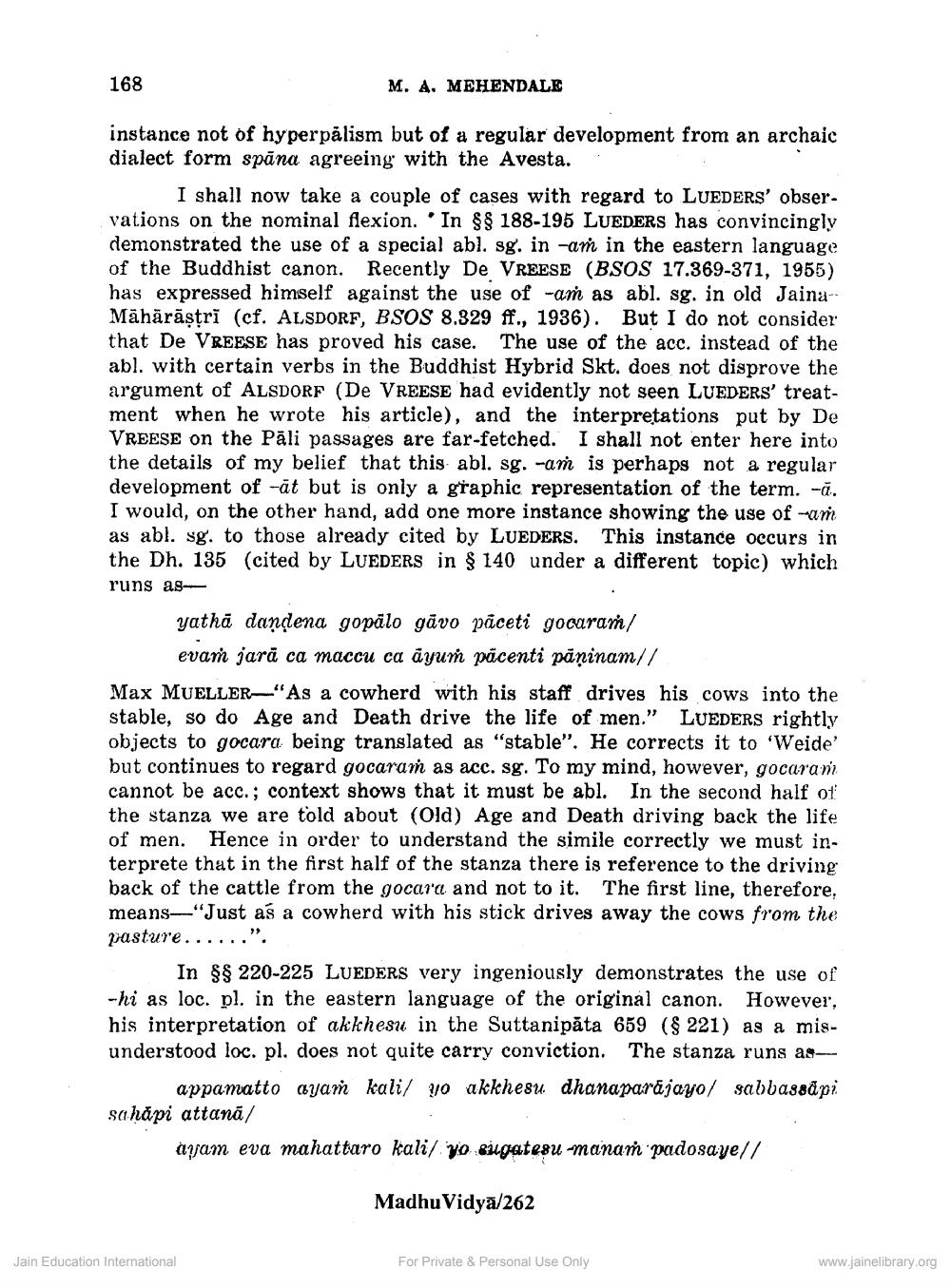________________
168
M. A. MEHENDALE
RSESE (BSOS 172
self against the
Māhārāstri lof
instance not of hyperpālism but of a regular development from an archaic dialect form spāna agreeing with the Avesta.
I shall now take a couple of cases with regard to LUEDERS' observations on the nominal flexion. In $$ 188-195 LUEDERS has convincingly demonstrated the use of a special abl. sg. in -am in the eastern language of the Buddhist canon. Recently De VREESE (BSOS 17.369-371, 1955) has expressed himself against the use of -am as abl. sg. in old JainaMähärāştri (cf. ALSDORF, BSOS 8.329 ff., 1936). But I do not consider that De VREESE has proved his case. The use of the acc. instead of the abl. with certain verbs in the Buddhist Hybrid Skt. does not disprove the argument of ALSDORF (De VREESE had evidently not seen LUEDERS' treatment when he wrote his article), and the interpretations put by De VREESE on the Pāli passages are far-fetched. I shall not enter here into the details of my belief that this abl. sg. -am is perhaps not a regular development of -āt but is only a graphic representation of the term. -ā. I would, on the other hand, add one more instance showing the use of an as abl. sg. to those already cited by LUEDERS. This instance occurs in the Dh. 135 (cited by LUEDERS in § 140 under a different topic) which runs as
yathā dandena gopālo gāvo pãceti gocaran/
evan jară ca maccu ca ayun pācenti pāninam// Max MUELLER-"As a cowherd with his staff drives his cows into the stable, so do Age and Death drive the life of men." LUEDERS rightly objects to gocara being translated as "stable". He corrects it to 'Weide' but continues to regard gocaram as acc. sg. To my mind, however, gocaran cannot be acc.; context shows that it must be abl. In the second half of the stanza we are told about (Old) Age and Death driving back the life of men. Hence in order to understand the simile correctly we must interprete that in the first half of the stanza there is reference to the driving back of the cattle from the gocard and not to it. The first line, therefore, means-"Just as a cowherd with his stick drives away the cows from the pasture......".
In $$ 220-225 LUEDERS very ingeniously demonstrates the use of -hi as loc. pl. in the eastern language of the original canon. However, his interpretation of akkhesu in the Suttanipăta 659 ($ 221) as a misunderstood loc. pl. does not quite carry conviction. The stanza runs as_
appamatto ayan kali/ yo akkhesu. dhanaparājayo/ sabbassăpi sahápi attanā/
aşam eva mahattaro kali/ vosilgatesu -manam padosayell
Madhu Vidya/262
Jain Education International
For Private & Personal Use Only
www.jainelibrary.org




